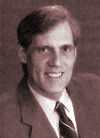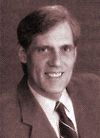Low bass is probably the most difficult part of the audio spectrum for loudspeakers to reproduce accurately. Most speakers with "quick, tight bass" don't go very low. Conversely, most speakers that <I>do</I> go low sound muddy and undefined in the bottom octaves. A good subwoofer is the usual solution, but is deep bass really necessary for musical satisfaction?
Electrical Power Industry Deregulation Opens Door for Scammers?
Electrical Power Industry Deregulation Opens Door for Scammers?
- Read more about Electrical Power Industry Deregulation Opens Door for Scammers?
- Log in or register to post comments
Music Group Massive Attack to Release Entire Album Online
Music Group Massive Attack to Release Entire Album Online
CEMA Files Final Report on Digital Radio with FCC
CEMA Files Final Report on Digital Radio with FCC
- Read more about CEMA Files Final Report on Digital Radio with FCC
- Log in or register to post comments
Recoton Corporation Licenses NHT Brand Name to Vergence Technology
Recoton Corporation Licenses NHT Brand Name to Vergence Technology
CD-ReWritable Market Growth Exceeds Industry Expectations
CD-ReWritable Market Growth Exceeds Industry Expectations
Jim Thiel: A Coherent Source Page 9
Jim Thiel: A Coherent Source Page 9

- Read more about Jim Thiel: A Coherent Source Page 9
- Log in or register to post comments
Jim Thiel: A Coherent Source Page 8
Jim Thiel: A Coherent Source Page 8

- Read more about Jim Thiel: A Coherent Source Page 8
- Log in or register to post comments
Jim Thiel: A Coherent Source Page 7
Jim Thiel: A Coherent Source Page 7

- Read more about Jim Thiel: A Coherent Source Page 7
- Log in or register to post comments
Jim Thiel: A Coherent Source Page 6
Jim Thiel: A Coherent Source Page 6

- Read more about Jim Thiel: A Coherent Source Page 6
- Log in or register to post comments
